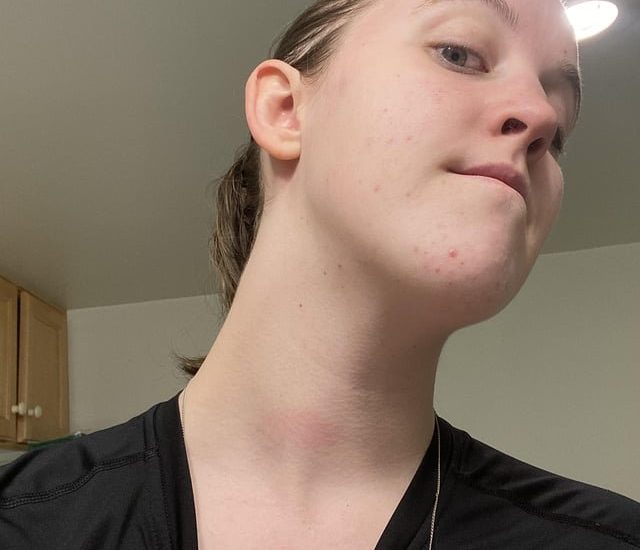Stop flinching by mastering your mind. Redirect focus, breathe, and ground yourself when faced with triggers. Control your reactions through awareness and practice. Train your body to respond calmly to stimuli. Embrace a sense of calm and self-assurance to reduce involuntary reactions. Challenge yourself to overcome the flinch response and reclaim your composure. Watch how simple shifts in mindset and behavior can empower you to stop flinching effortlessly.
How to Stop Flinching
Flinching is a natural reaction that many people experience when faced with unexpected situations or sudden movements. It’s like our body’s way of protecting itself, but sometimes, flinching can be more of a hindrance than a help. In this article, we will explore what flinching is, why we do it, and most importantly, how to stop flinching. So, let’s dive in!
Understanding Flinching
Before we learn how to stop flinching, it’s essential to understand what flinching actually is. Flinching is an instinctive reaction that occurs in response to a sudden stimulus. It’s like a quick, involuntary movement or jump that happens without us even thinking about it. Flinching can be triggered by loud noises, unexpected movements, or even just a sense of danger.
Causes of Flinching
There are several reasons why people flinch. One common cause is the startle reflex, which is a natural response to a perceived threat or danger. When our brain senses something unexpected or threatening, it sends signals to our muscles to react quickly, leading to a flinch. Another cause of flinching can be past traumatic experiences that have left us more sensitive to certain triggers.
Effects of Flinching
Flinching can have various effects on our daily lives. It can make us feel more anxious or jumpy, impacting our overall sense of calmness. In some cases, frequent flinching can also affect our relationships, as others may perceive us as being constantly on edge. Learning how to stop flinching can help us regain control over our reactions and improve our quality of life.
Ways to Stop Flinching
Now that we have a better understanding of flinching, let’s explore some practical strategies to help us stop flinching in different situations.
1. Deep Breathing Exercises
One effective way to combat flinching is through deep breathing exercises. When we feel a flinch coming on, taking slow, deep breaths can help calm our nerves and reduce the intensity of our reaction. Try inhaling deeply through your nose and exhaling slowly through your mouth. Repeat this process several times until you feel more relaxed.
2. Mindfulness Techniques
Practicing mindfulness can also be beneficial in preventing flinching. Mindfulness involves being fully present in the moment and observing our thoughts and feelings without judgment. By staying mindful of our surroundings and focusing on the present, we can train our minds to react less impulsively to sudden stimuli.
3. Gradual Exposure
If specific triggers consistently lead to flinching, gradually exposing yourself to those triggers can help desensitize your reaction over time. Start by exposing yourself to the trigger in small, controlled doses and gradually increase exposure as you become more comfortable. This method can help rewire your brain’s response to the trigger.
4. Physical Activities
Engaging in physical activities like yoga, tai chi, or other relaxation techniques can help reduce overall stress levels and promote a sense of calmness. Physical exercise can also release endorphins, which are natural mood boosters that can help combat anxiety and tension, ultimately reducing the likelihood of flinching.
5. Seeking Professional Help
If flinching interferes significantly with your daily life and well-being, it may be beneficial to seek help from a mental health professional. Therapy sessions can provide you with additional coping mechanisms and strategies tailored to your specific needs, helping you address the root causes of your flinching and develop healthier responses.
Flinching is a common reaction that many of us experience, but it doesn’t have to control our lives. By understanding the causes of flinching and implementing practical strategies like deep breathing, mindfulness, gradual exposure, physical activities, and seeking professional help, we can learn how to stop flinching and regain a sense of control over our reactions. Remember, it’s okay to seek support and take small steps towards managing your flinching. You deserve to feel calm and confident in the face of unexpected situations!
Stop flinching, because you’ll miss the interesting part 👀#boxing #boxingtraining
Frequently Asked Questions
Q: What are some effective techniques to overcome flinching?
A: Practice deep breathing exercises to calm your nerves and focus on staying relaxed. Additionally, visualization techniques where you imagine a positive outcome can help reduce the tendency to flinch.
Q: How can I gradually desensitize myself to situations that trigger my flinching reflex?
A: Gradually expose yourself to the trigger stimuli in a controlled environment. Start with minimal exposure and gradually increase the intensity as you build confidence in managing your reaction.
Q: Is seeking professional help a viable option to address chronic flinching behavior?
A: Yes, consulting a therapist or counselor can be beneficial in uncovering underlying causes of your flinching and developing personalized strategies to overcome this reflex. They can provide guidance and support tailored to your specific needs.
Final Thoughts
To stop flinching, practice relaxation techniques like deep breathing. Gradually expose yourself to triggers to desensitize the response. Focus on building confidence and self-assurance to reduce reactivity. Remember, stopping flinching takes time and effort, so be patient with yourself. By implementing these strategies consistently, you can effectively overcome the reflexive response and regain control of your reactions.










